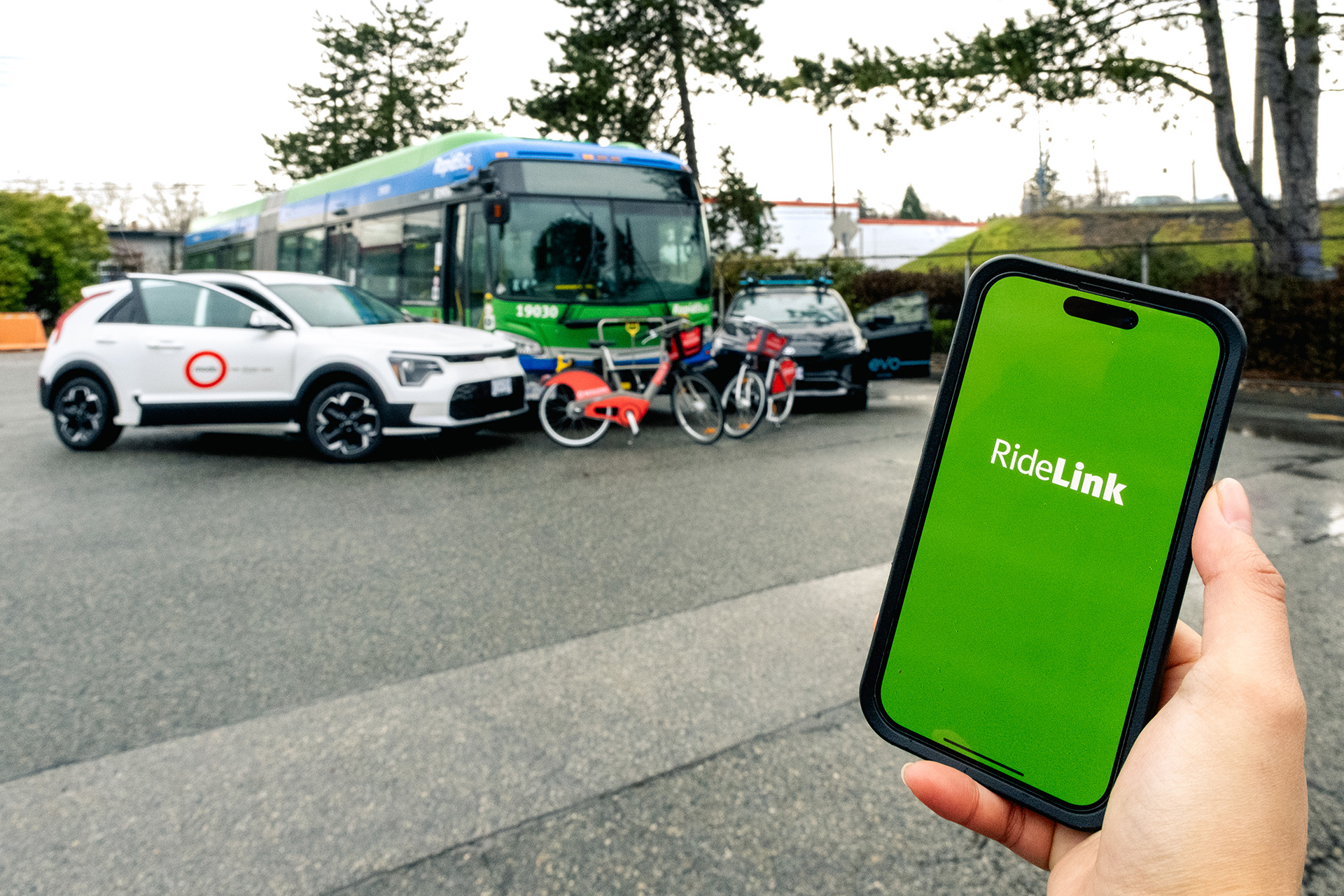
Every so often ‘new’ forms of urban mobility are invented. Anyone pounding the global ITS conference circuit will be greeted by vehicles and systems that promise to solve urban mobility, whether for individuals or for congested city streets. Stands proudly display vehicles big and small, with innovative propulsion, perhaps in modular configurations, or on rails, in tunnels, in the air. They may boast autonomy, to optimise utilisation of infrastructure, maximise return on investment or promise freedom, solutions and the future, but now.
However, they may not be entirely new. “Whenever you hear about a new innovation, remember that it might have already been invented decades ago," points out Lior Steinberg, co-founder and urban planner at Humankind. "Don't fall for the new and shiny: try to understand what didn't work back then.”
These days, shared transport places a huge emphasis on technological innovation. It is, however, most probable, that the original ancestor of all these ‘new’ mobility ideas was not technology driven – but a social movement.
Invention out of chaos
The author Mary Shelley observed that “invention, it must be humbly admitted, does not consist in creating out of void, but out of chaos”, and the origin of shared mobility is pure chaos: a 1960s anarchist social movement from Amsterdam. The Provos (named to reappropriate a derogatory term for disaffected Dutch teenagers) aimed to harness the energy of disenchanted youth through staged cultural interventions. They created enormously popular events and pranks which combined counter-culture and humour aimed at sparking social change. They campaigned against several things: for example, air pollution from traffic congestion, the tobacco industry and prohibitions on marijuana. Importantly, they won the sympathy of Amsterdammers, and at one point, five Provos were elected as members of the City Council.
"Historic city centres and residential neighbourhoods were threatened with destruction to make way for highways"
One of these Provos, Luud Schimmelpennink, was pivotal in the development of shared mobility. The early 1960s saw the first real impacts of cars on urban life and culture. Across the western world, urban planners began reshaping city centres to accommodate cars. Historic city centres and residential neighbourhoods were threatened with destruction to make way for highways.
At the same time cars began to choke Amsterdam’s streets and the city’s previously most popular mode of transport – the bicycle – was in decline. With cars squeezing out bicycles, and car-centric planners planning the destruction of communities, the Provos were able to seize on this dynamic and make it one of their rallying points.
They declared that “the bicycle is something but almost nothing”, celebrating the bicycle’s minimalism. Schimmelpennink would say that “the car is asocial” but “the bicycle makes downtown a playful centre”.
The Provos, however, did not just campaign with words. Their social interventions were often practical. Their statement on the bike was underlined by creating a bike-sharing scheme consisting of a haphazard system of white painted bikes left unlocked across the city, often confiscated by the police, and - typically anarchist - free to use.

By 1967, Schimmelpennink had been elected to the city council. He was unusual in that he was also an industrial designer with the ability to make some of the plans more concrete. When his proposal to formalise bike-share was not passed – conservatives thought the bicycle old-fashioned - he turned his mind and inventive skill to a shared system of compact electric cars instead.
In 1968 he demonstrated a prototype EV to a fellow councillor. Four years later - in 1972 - he was ready to present plans for the system to the authorities.
Innovative funding model
These plans were necessarily complex. They included an innovative funding model through the establishment of a cooperative society, a network of tiny cars which necessitated the design of both EVs and base station technology, and the management systems including member registration, payment and the management of the location of vehicles.
Effectively Schimmelpennink had come up with a combined social, technical and business model. Whilst his approach to shared mobility may have been born of chaos, its technological application was at the cutting edge of innovation at the time.
Initially one base ‘loading’ station was permitted in 1973, housing just five cars for three months. The Witkars (named in homage to the original ‘Witte Fietsen Plan’ or White Bike Plan) were two-seater, three-wheeled, electrically-powered vehicles. Each had an overhead charging system which charged their batteries automatically when they pulled into the Witkar loading station. They had a maximum speed of 30km/hour and a range of 30 minutes driving on full charge.
The system grew to three stations with city funding and the support of 2,500 members of the cooperative society over the course of 1974 and 1975.

To drive a Witkar, members joined and paid both a lifetime fee for their ‘key’ and a fee per kilometre for driving. Initially they operated manually with members showing their membership cards to an operator. Cars were started using a coin. However, Schimmelpennink quickly pioneered an automated membership scheme, which was followed by a punchcard-based banking and reconciliation system which enabled user accounts to be kept. Shortly after, this was developed into a magnetic card that both started the car and integrated with the banking system. On starting the car, members would dial ahead to check that there would be a space at the destination base. The system was smart and fully functional, implementing all the elements recognisable in today’s bike- and car-sharing systems.
In an interview with the BBC, Schimmelpennink recalled how some greeted the system with initial suspicion: “In the beginning, the police would drive behind the witkarren to see if anything would go wrong.” And with Schimmelpennink retaining his Provo iconoclasm with statements like “Leave your shitcar, take a Witkar” to promote it, some scepticism in more mainstream quarters is perhaps understandable.
Despite this, the system worked and Witkar was later granted a 10-year pilot in the city. Eventually there were five stations and over 4,500 members using them.
Studies carried out by the Amsterdam city council showed that with 20 Witkar stations in operation, a 10% reduction in inner city passenger traffic and 17% reduction in occupied parking spaces would be achieved. However this expansion never materialised.
Lack of scale
Witkar did not survive beyond its 10-year pilot period and closed in 1988. In various interviews Schimmelpennink put down its failure to a lack of scale. He described it as “like a tram network with three stops" and suggested in an interview with The Guardian newspaper that much more was required: “In order to make it a success, we needed to have a network of at least 25 stations – and in the end, we were unable to finance the extension of the network. That’s why it didn’t work out.” This lack of scale was also due to a lack of political support - which in turn reduced access to the funding which would have made scaling up possible.
Political support, funding and growth often go hand in hand – and their impacts can be traced (both positively and negatively) in the development of shared mobility systems worldwide. The most successful systems – such as the Transport for London Santander scheme or the Paris Vélib - combine city support and private sector finance with robust operations and technology.
"Although Witkar closed, it’s not really obvious that it should be counted as a failure"
Although Witkar closed, it’s not really obvious that it should be counted as a failure. Its technology was innovative and robust. Many of the technological innovations were adopted in bike-share schemes in the following decades, sometimes directly because of Schimmelpennink’s involvement in their development. His further development of the original Witkar membership, tracking and back-office systems for the Depo bike-share system he designed was deployed on a small scale in the Netherlands. Depo was not scaled up – but inspired large-scale bike-sharing systems like the JCDecaux launches in Paris and Lyon in the early 2000s.
The interventions, too, that enabled Amsterdammers to turn the tide on the private car and set aside more and safer space for cycling, stemmed from this period. As Steinberg reflects: “At the end of the day, it's not the Witkar that saved Amsterdam. It was its decision to rethink the scarce space in the city. It stopped giving all of it to cars."
As a social inventor, industrial designer and politician Schimmelpennink "should be celebrated much more" as one of the inventors of shared mobility, starting from the White Bike Plan of the 1960s.
And when it comes for solutions to urban mobility, Steinberg concludes: “We just don't have the time to make more mistakes. It's better to look at cities that have already implemented walking, cycling, public transit and shared mobility, and adopt their simple ideas and solutions.”












